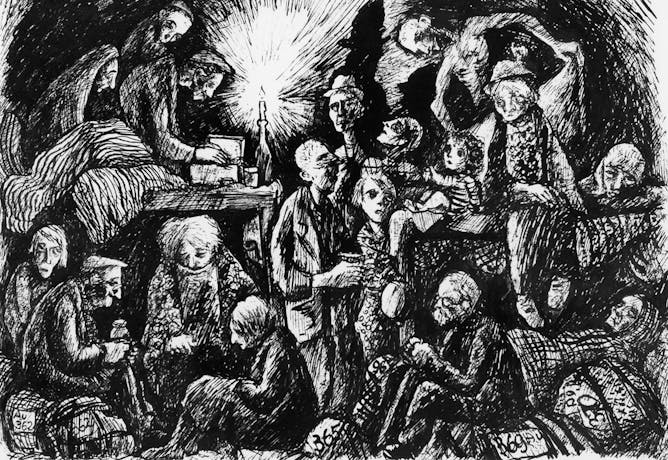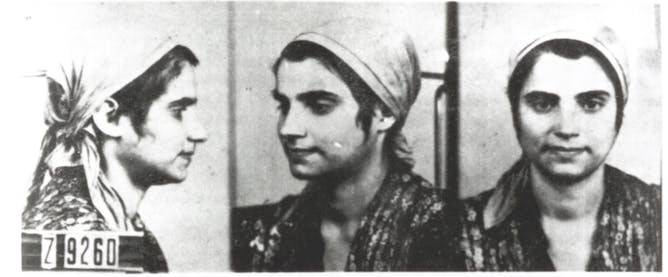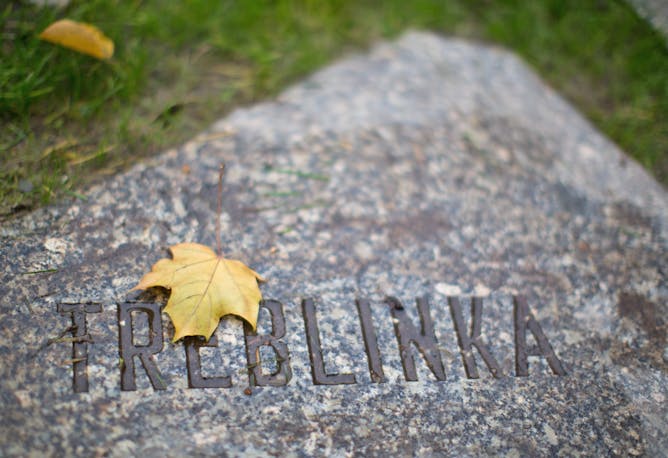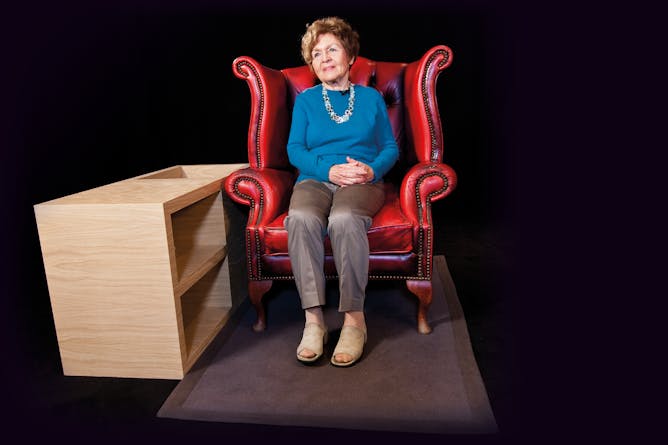|
|
|
Editor's note
|
|
Writing in 2001, the Dutch poet Chawwa Wijnberg, whose father was executed by the Nazis, spoke about the unspeakable horror of the Holocaust. “Always present is the unsaid / the unsaid / that rips the wound open”. While we may never be able to fully fathom the true extent of the atrocities, today – 75 years since the liberation of Auschwitz – we are reminded of the importance of talking and confronting these things as the world once again faces the rise of anti-Semitism and far-right populist movements.
Writing about the tradition of Holocaust poetry, Marian de Vooght sheds light on the many different groups who were persecuted by the Nazi regime and the power that continues to be found in the reclamation of their voices. Among those voices are those of the Roma and Sinti people, 500,000 of whom were killed in a genocide that is rarely spoken of.
As this shows, there is still much of this terrible history to confront. This includes the physical evidence yet to be discovered from the many understudied sites across Europe. Such archaeological findings may come to play a key role in future Holocaust education, which has, until now, primarily depended upon the testimonies of survivors. However, as fewer and fewer remain with us educators must look to different methods of teaching and
also consider how best to preserve their voices and use those of their children.
|
Naomi Joseph
Commissioning Editor, Arts + Culture
|

|
|
Top stories
|

In the Living Quarters by Bedrich Fritta portrays Terezín (Theresienstadt) ghetto where early Holocaust poetry was written.
Wikimedia
Marian de Vooght, University of Essex
Holocaust poetry has been written for the last 90 years by people all over the world, in many different languages and by many different groups.
|

Roma or Sinti girl imprisoned in Auschwitz. Pictures taken by the SS for their files.
Wiener Holocaust Library Collections
Barbara Warnock, University of Cambridge
Up to 500,000 Roma and Sinti were murdered by the Nazis and their collaborators.
|

EPA/Michael Kappler
William Mitchell, Staffordshire University
As the last survivors die out, it is more important than ever to uncover physical evidence of Nazi atrocities.
|

Holocaust survivor Janine Webber (British Empire Medal) being filmed for the forever project.
The National Holocaust Centre and Museum
Sara Jones, University of Birmingham
Survivors voices are central to Holocaust education, but as their numbers dwindle educators must work to preserve their testimonies and bring in the second generation.
|
Health + Medicine
|
-
Zheng Wang, De Montfort University
How China appears to have learned from its response to the SARS crisis of 2003.
-
Diana Bell, University of East Anglia
Wildlife trade is a threat to human health.
-
Debbie Watson, University of Bristol; Helen Ball, Durham University; Jim Reid, University of Huddersfield; Pete Blair, University of Bristol
It has become common to believe that if babies sleep in these boxes, it will help protect them from sudden infant death syndrome. Unfortunately, the research does not back this up.
-
Christian P Subbe, Bangor University
Our research uses artificial intelligence to unblock hospital beds and helps doctors and nurses to know quickly which patients are safe to go home.
|
|
Politics + Society
|
-
Sian Lewis, University of Roehampton
When you play 'devil's advocate', you minimise the problem.
-
Vittorio Bufacchi, University College Cork
Post-truth questions the very nature of truth itself – that's why it's so dangerous.
-
Inga Kristina Trauthig, King's College London
With dozens of international players meddling in Libya, nobody wants to see their side weakened.
|
|
Environment + Energy
|
-
Robert Blasiak, Stockholm University
The Great Acceleration inaugurated the Anthropocene in the 1950s. Now, a similar race for resources and space is happening in the ocean.
-
David Comerford, University of Stirling
Finding out what would motivate people to reduce their carbon emissions can be determined by examining behaviour.
|
|
Arts + Culture
|
-
Gerard Lee McKeever, University of Glasgow
Different and contradictory versions of the poet have existed since the first literary tourists went looking for his legacy.
-
Marion Turner, University of Oxford
The Monty Python star was also a highly respected author on Chaucer and the writer of a series of children's history books.
|
|
Science + Technology
|
-
Gareth Dorrian, University of Birmingham; Ian Whittaker, Nottingham Trent University
Solar activity is sometimes blamed for climate change but the data suggests otherwise.
-
Lara Warmelink, Lancaster University
The UK government is introducing polygraph tests for convicted terrorists on probation.
|
|
Business + Economy
|
-
Douglas Bamford, University of Oxford
From wearables with monitoring chips to face scanners that assess your contentment, workplace surveillance seems to be going in one direction.
|
|
| |
Featured events
|

|
Room SLB/118, Spring Lane Building, Campus West, York, York, YO10 5DD, United Kingdom of Great Britain and Northern Ireland — University of York
|

|
Room PZA/103, Piazza Building, Campus East, York, York, YO10 5GW, United Kingdom of Great Britain and Northern Ireland — University of York
|

|
Bowland Auditorium, Berrick Saul Building, Campus West, York, York, YO10 5DD, United Kingdom of Great Britain and Northern Ireland — University of York
|

|
Bowland Auditorium, Berrick Saul Building, Campus West, York, York, YO10 5DD, United Kingdom of Great Britain and Northern Ireland — University of York
|
|
|
|
| |
| |
| |
| |
| |
|
|
|
|
|
|
|